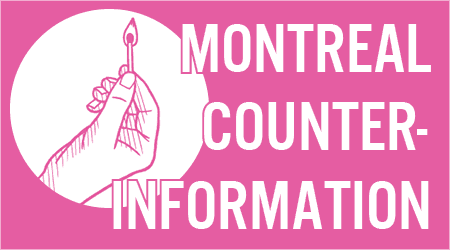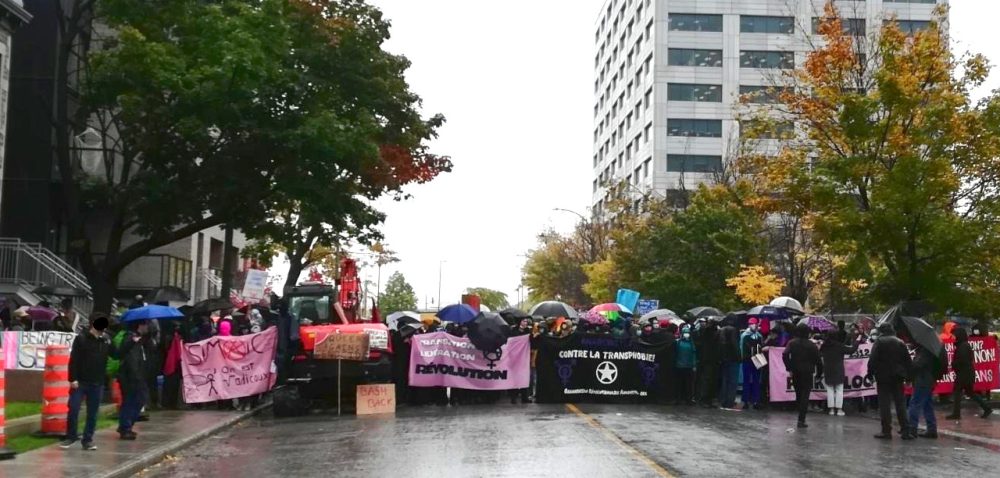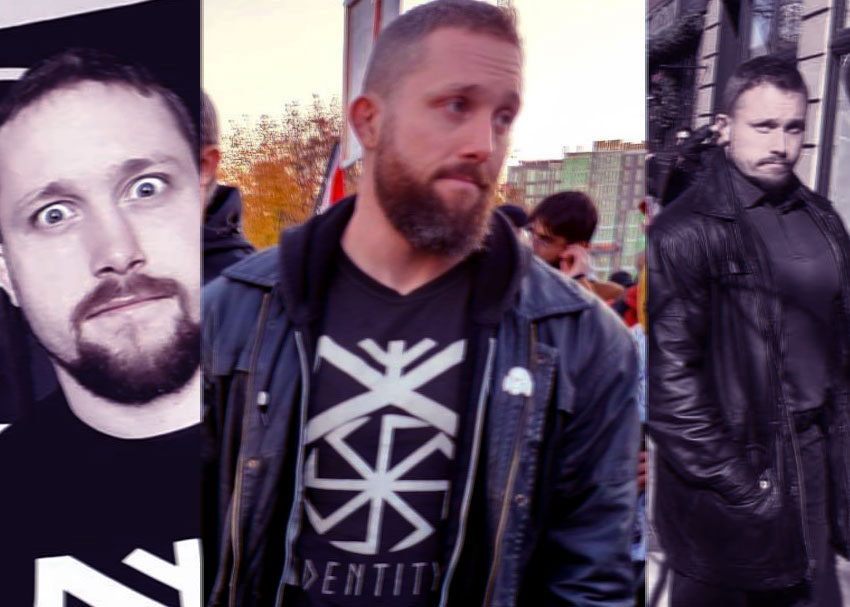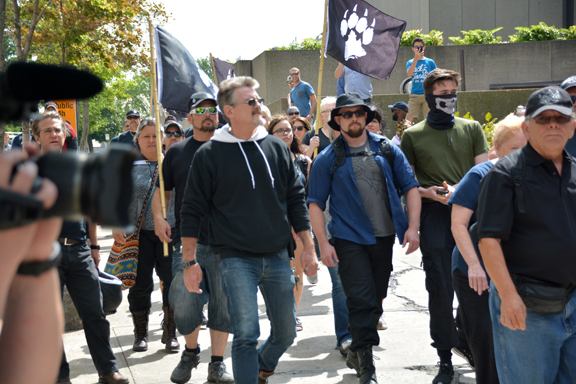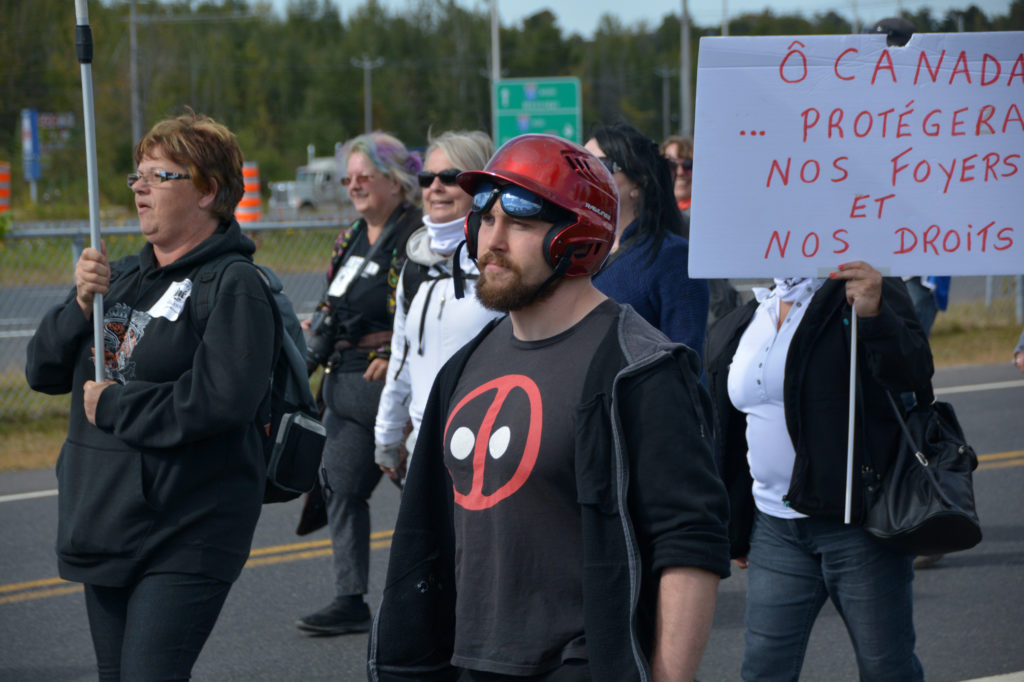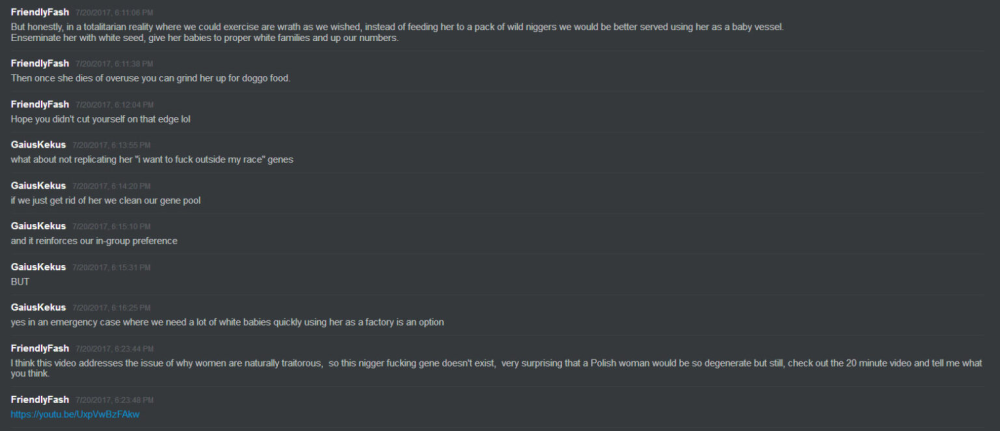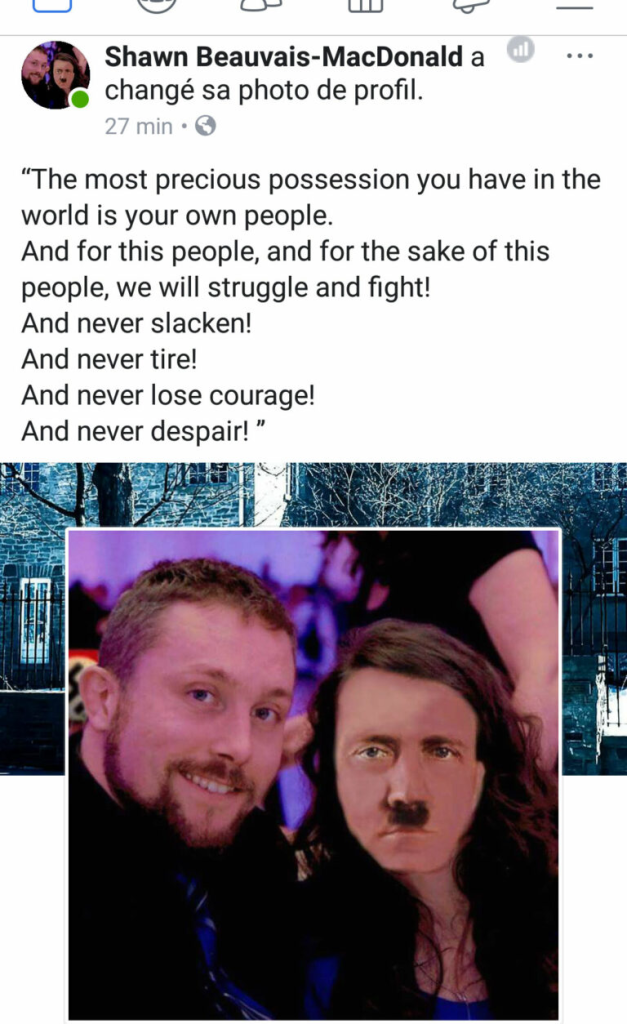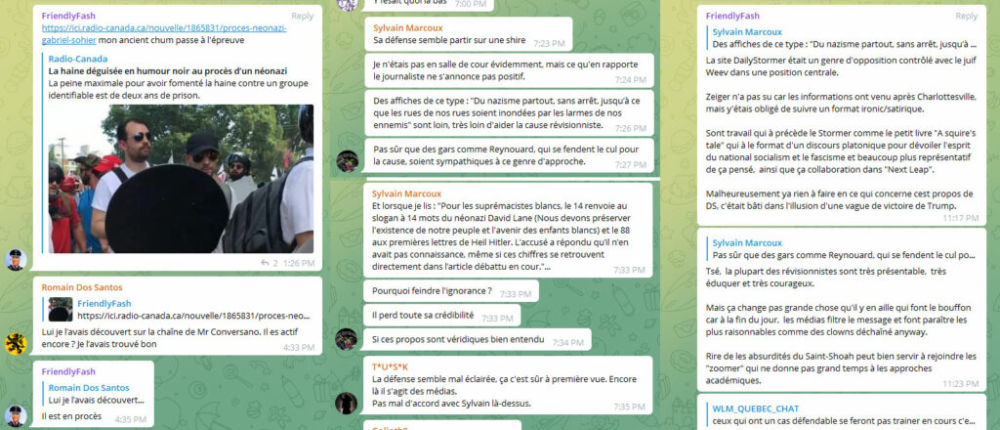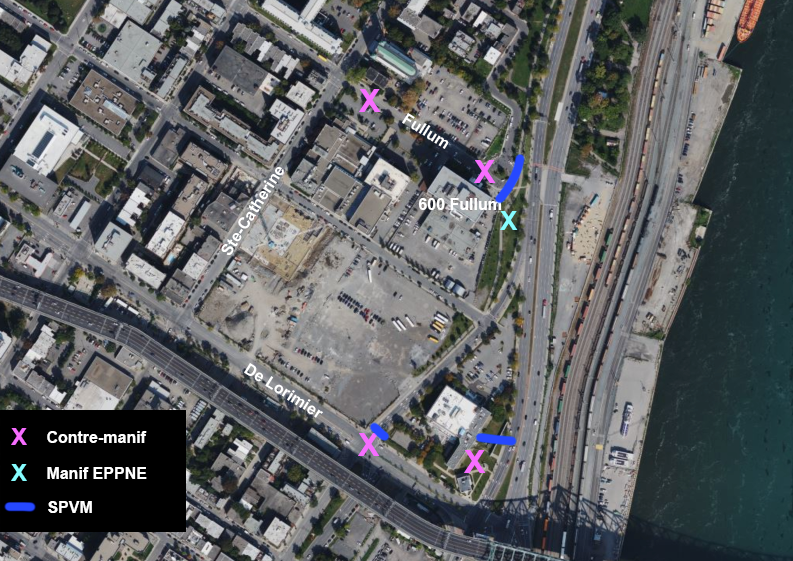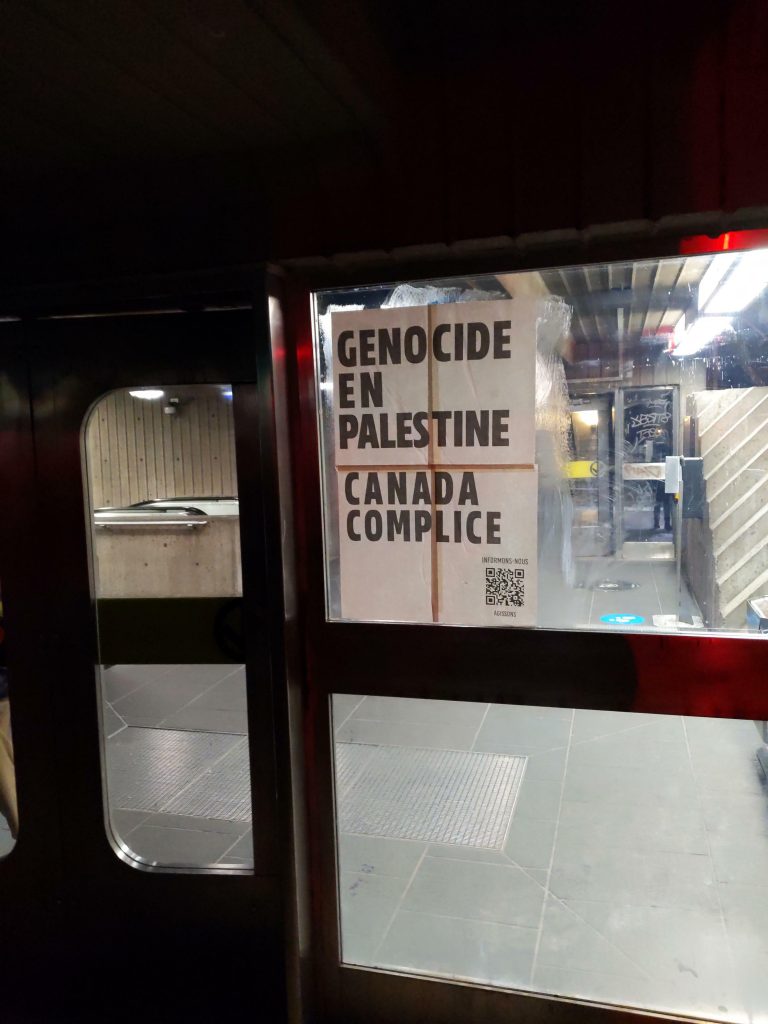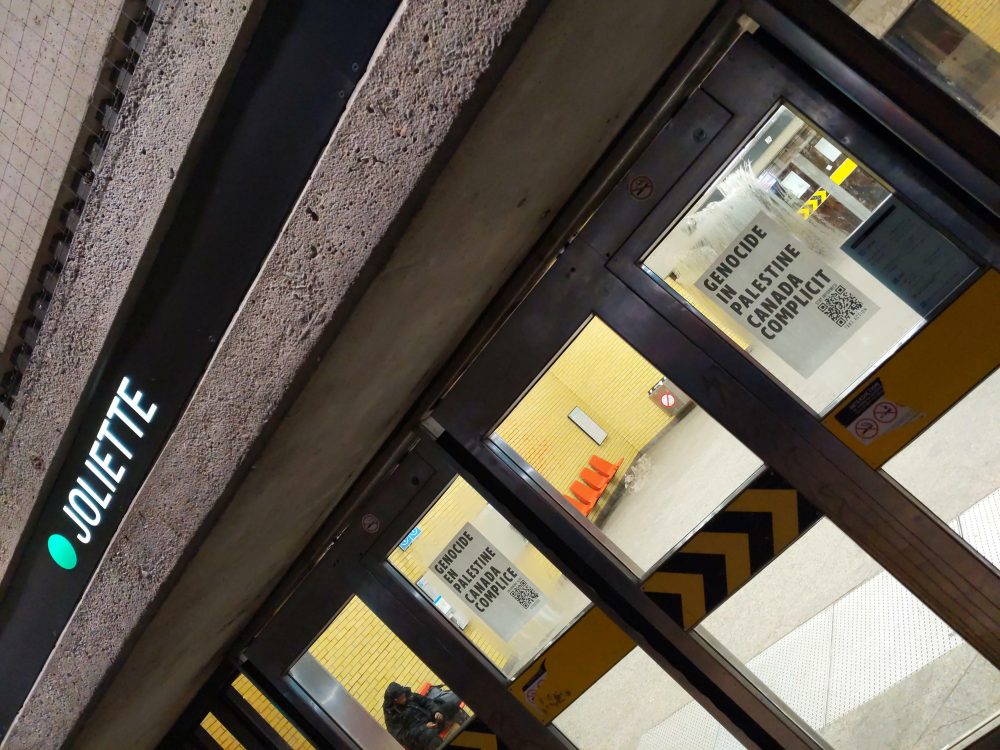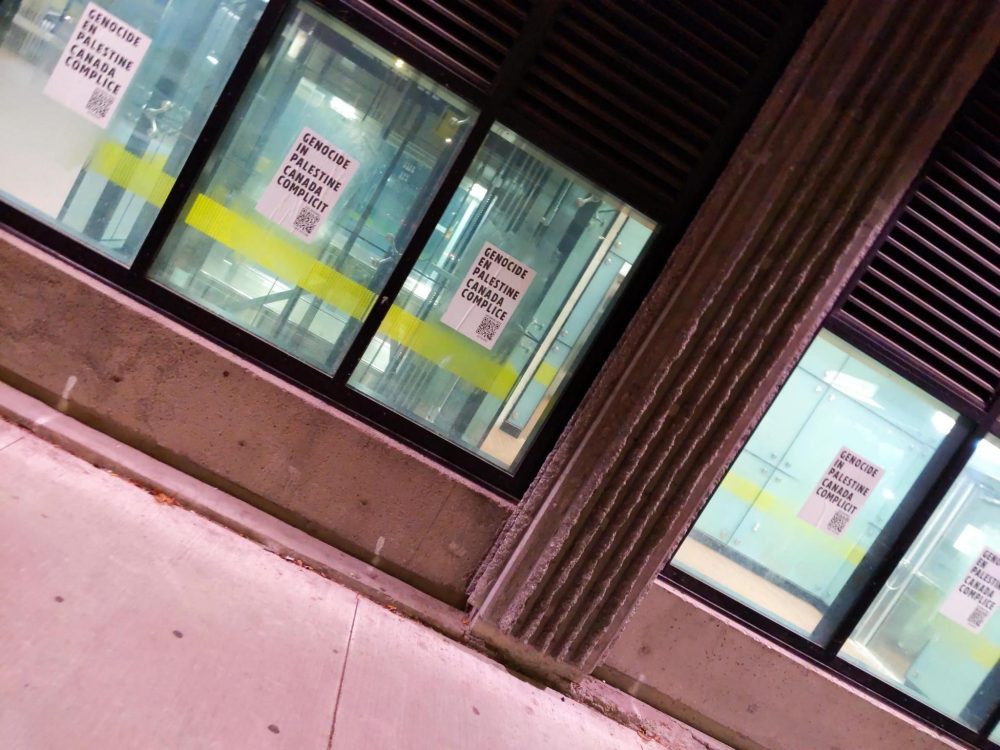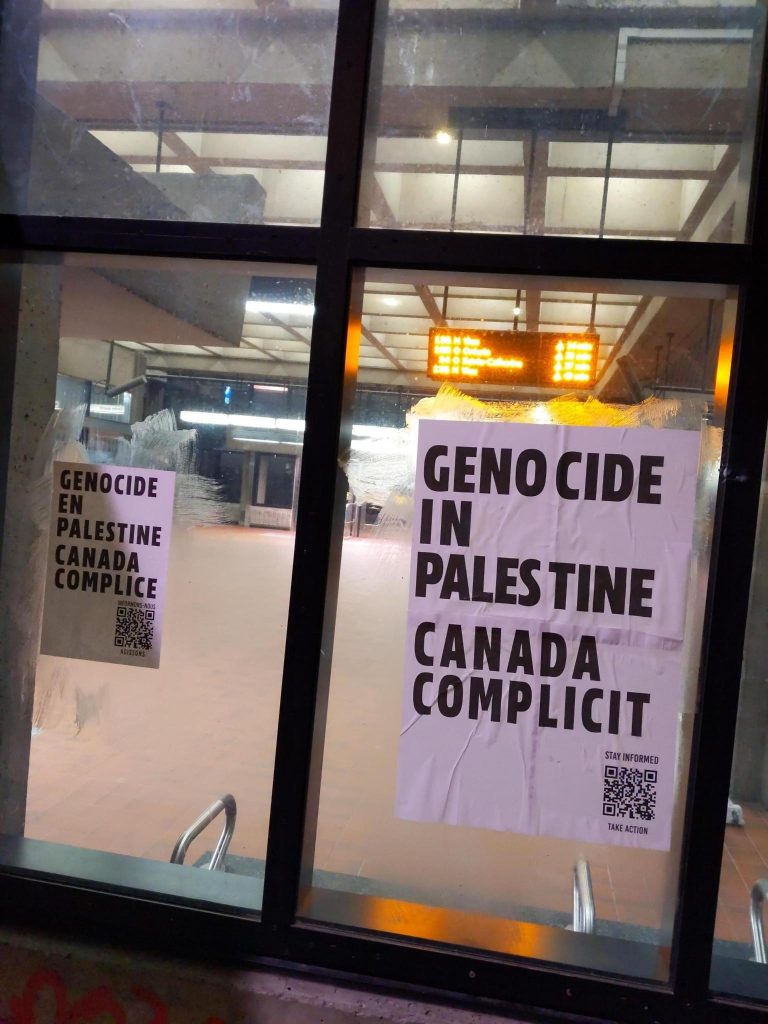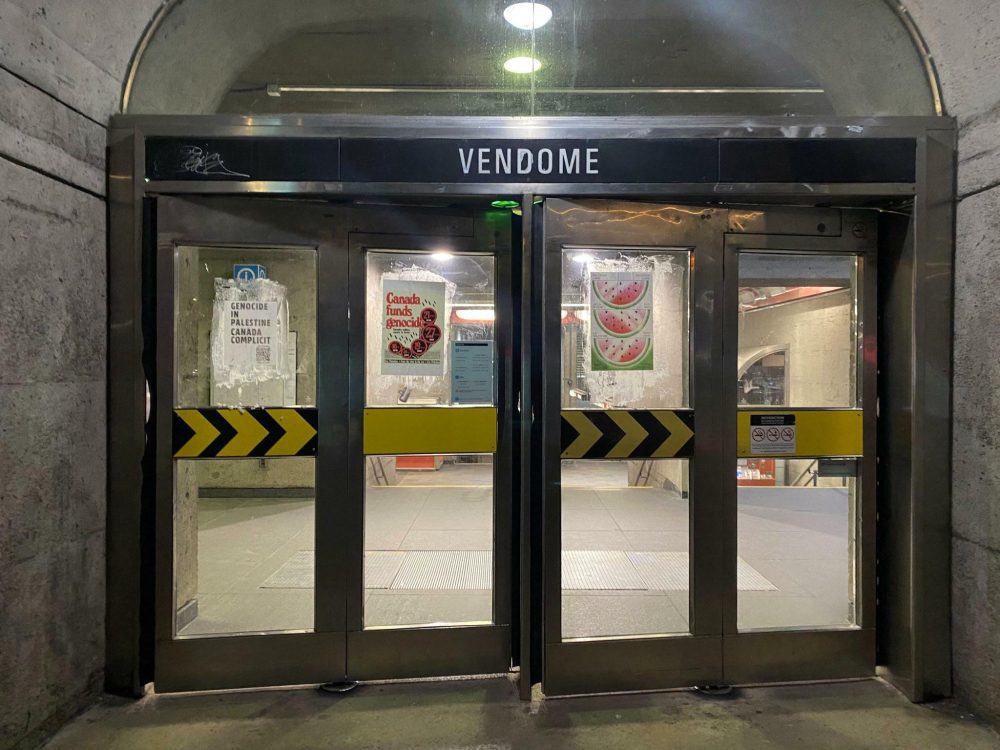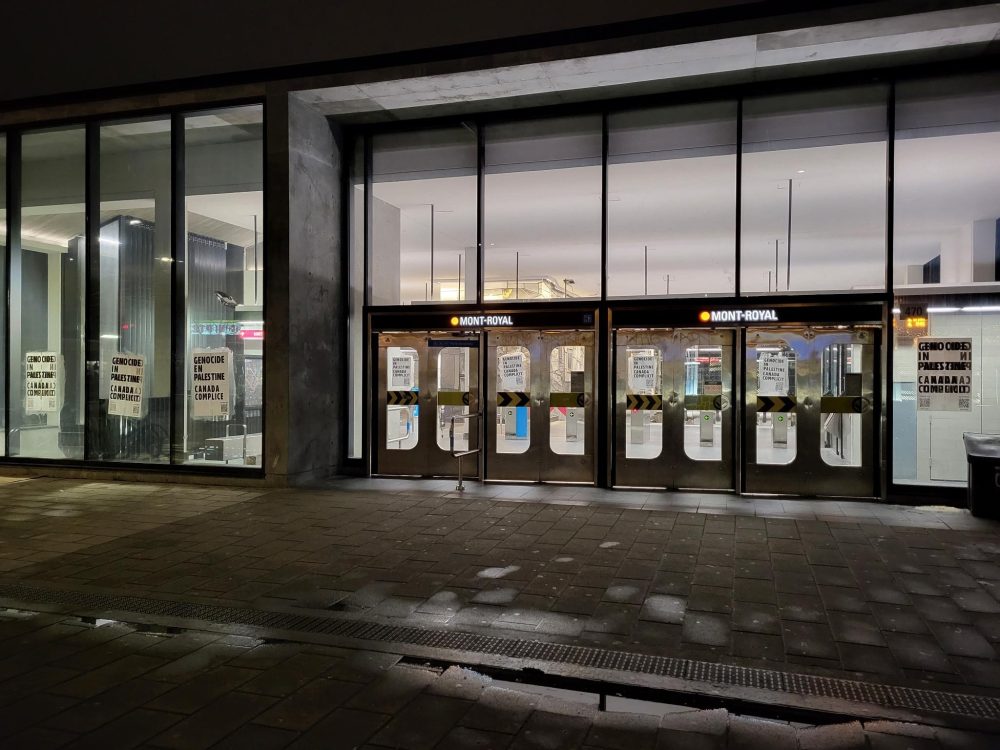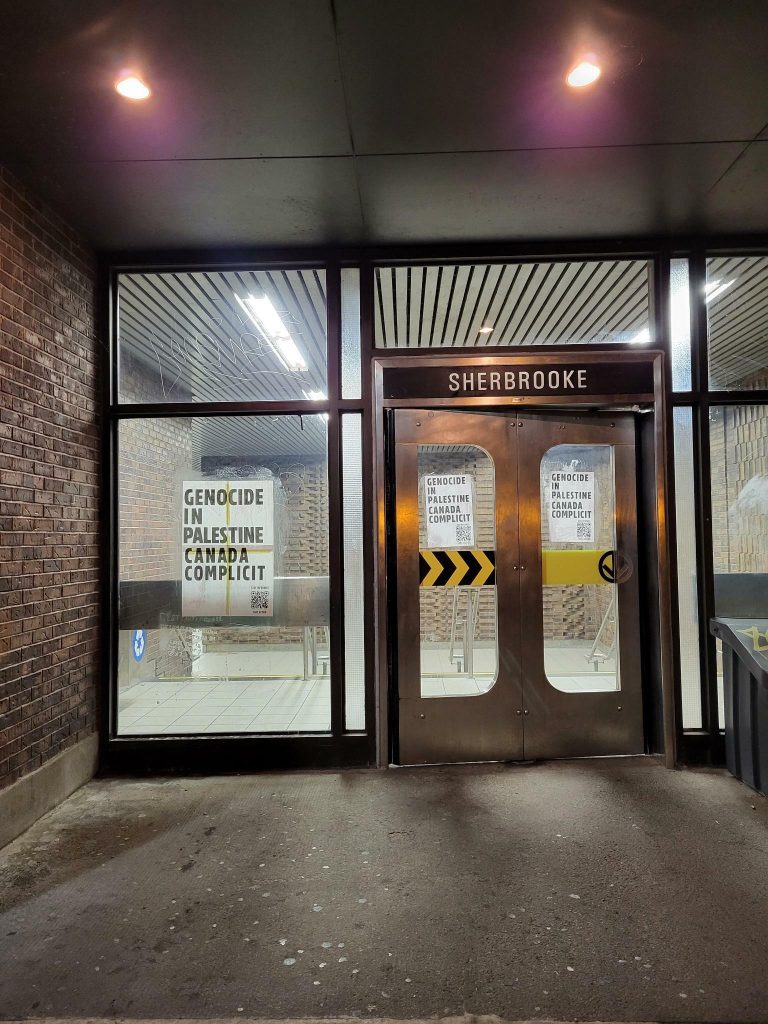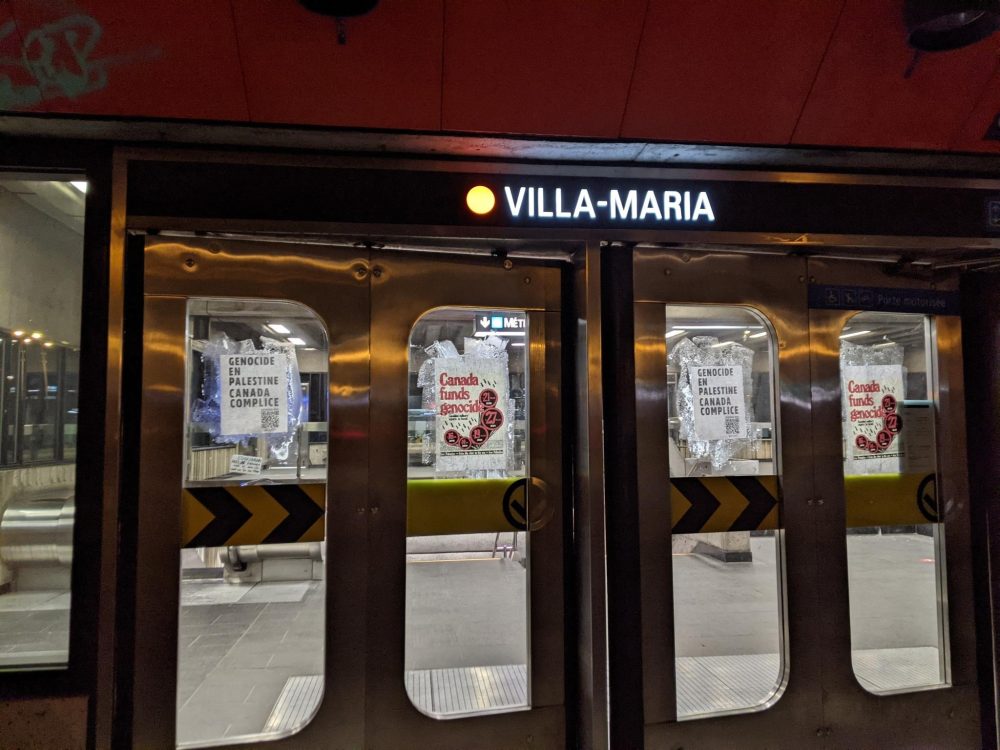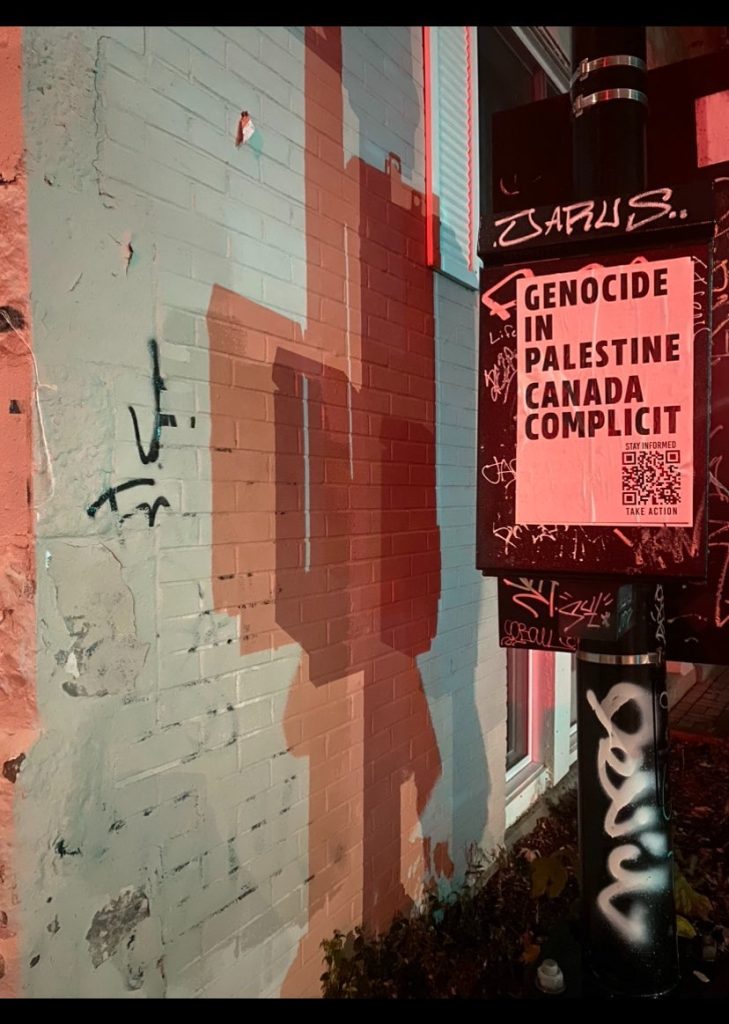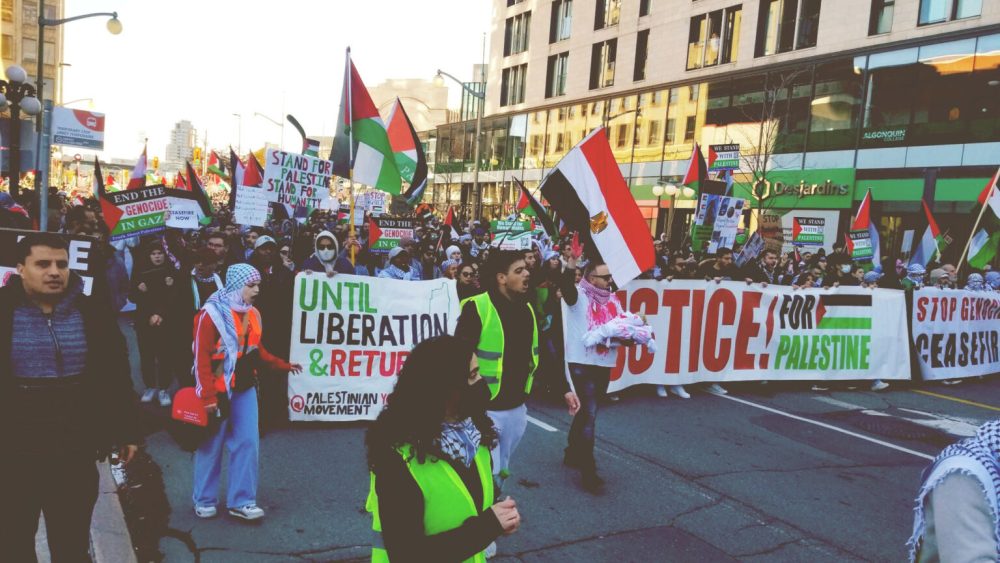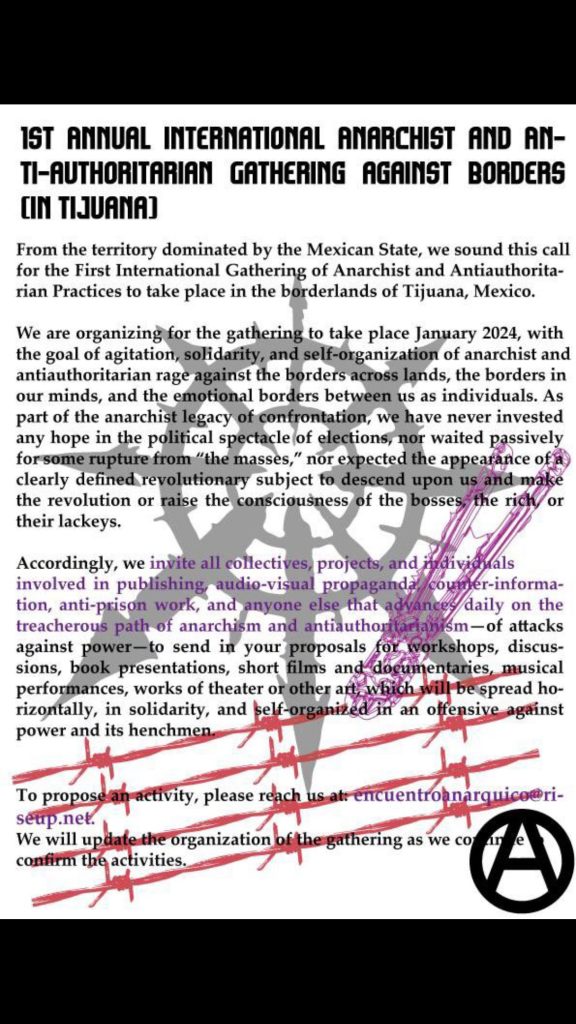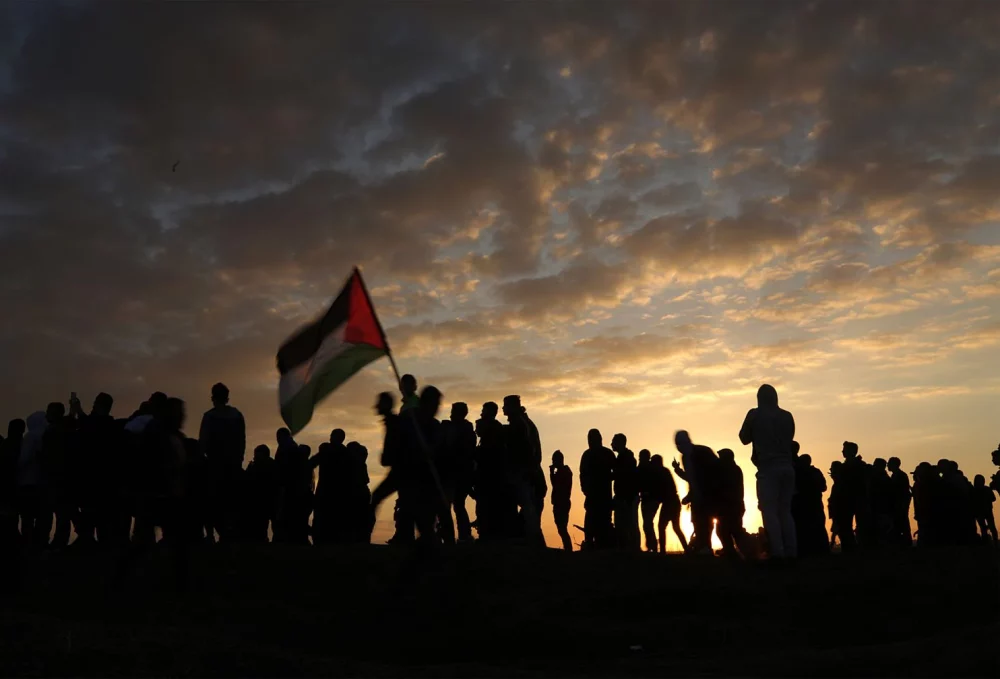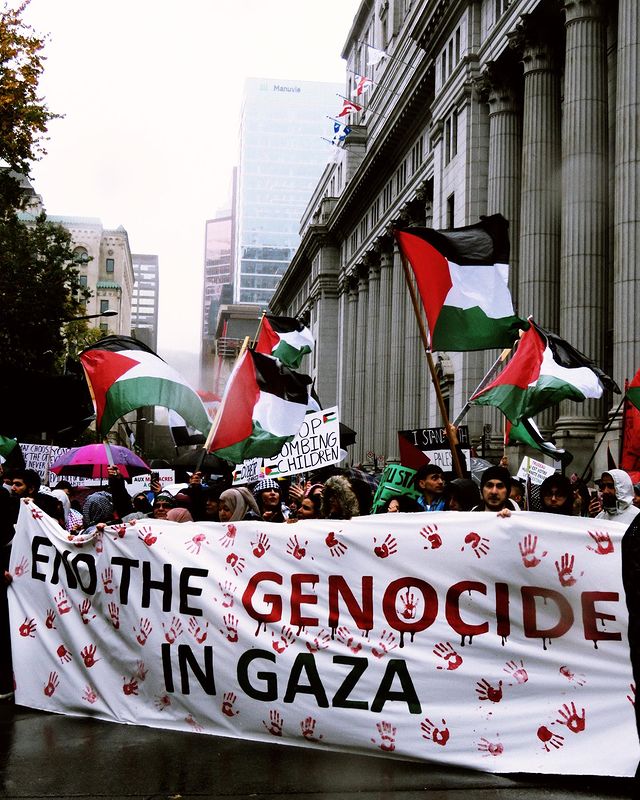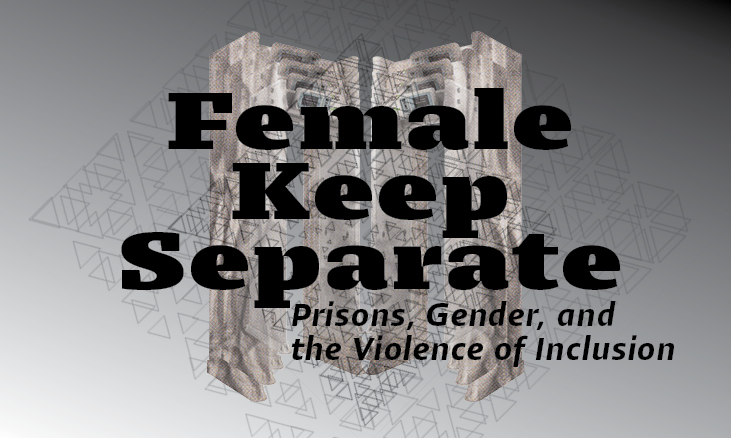
Anonymous submission to North Shore Counter-Info
First, a warning: This text is written by and for queers and their friends. It is meant as part of a conversation around inclusion and identity where the validity of queer people isn’t in question. Anyone using this text to contribute to homo- or transphobia is a fucking goof.
***
When finally the cell door closes, when the jangling keys recede, you’ve arrived as far as you’re going that day. Then you can exhale alone with your mattress and be in your own body again, your body no longer a problem to be solved or a question to be answered. Just your own familiar weight under the blanket, where you can just shake and shake and try to sleep and get ready for whatever happens next.
I’ve done time in both men and women’s prisons, and from this I’ve learned a lot of things about the world we live in. About gender and how the state perceives it, about how gender is a form of control. Here in the territory called Canada, the state changed its rules about how its institutions engage with gender a few years ago by listing “gender identity” as a charter-protected category, like race or sex, in Bill C-16i. This meant that all the arms of the state have been required to figure out what it means to respect self-identification around gender.
In the stark, violent world of prison, the weakness of the liberal framework of gender is very clear. Canadian society officially approaches difference positively, through inclusion of diverse identities based on self-identification. This is in many ways the product of struggle, but we also have to be able to critique it to continue working towards a world without prison and the violence of gender. We will get into this more in a minute, but adopting the state’s purely positive understanding of gender identity can lead us to oversimplify our understanding of (hetero-)sexism and end up defending the state’s projects from reactionaries when we should be attacking them on our own terms.ii
Getting Identified
Prison is one of those rare remaining spaces where the state is openly involved in categorizing people by gender and exposing them to differentiated treatment on that basis. When I lay on that shitty mattress, I was in a cell in the seg unit of the women’s section of my local jail after having been identified as trans. I had been grilled about my gender and sexuality for about two hours until I was in tears, which felt horrible since I normally try to not show much to the guards.
On a human level, I don’t think their actions were at all malicious. The process was new, most of them hadn’t dealt with it before, and they probably don’t know any trans people. And a lot of it wasn’t the official questions – when the guard behind the desk paused to type something, one of the ones off to the side would chime in with curiosity, “So you won’t identify as anything, but do you like men or women? You gotta make up your mind.” Then the desk guard would continue, “So if you’re on suicide watch and we’ve taken your clothes away, who do you want to be watching you on camera, a male or a female?”
How do you identify. Identify yourself. There are two metal detectors leading to two different incarcerations, you need to identify yourself so we know which to use.
The pressure to identify had started just before dawn that day, not long after our door got kicked down and the flashbangs went off. I was zip tied naked under a sheet by a masked and armoured cop carrying an assault rifle, then a more normally dressed cop came in. He told me some charges, and then asked if I wanted a male or female cop to watch me get dressed. I said I didn’t care. He went and got a female cop and then cut the zip ties off. I sifted through my clothes for something both femmy and warm, then ignored their calls to hurry as I slapped on some makeup.
In the police station, I kept my face blank as the detective showed me pictures and documents and asked me questions. When the time came to get transferred to court, the court officers asked who should pat me down, a male or a female. I said I didn’t care. They said I had to answer. I said whoever wanted to could, I couldn’t stop them. They decided to have the male officer grope my bottom half and the female my top.
After court, I was loaded into a transport van, a single-prisoner box, classified as FKS, “Female Keep Separate”. A bunch of men were in the other boxes, and one of them started joking, calling me his girlfriend. We got moved one after the other into the men’s section of the jail, put in cells beside each other, and the joking continued. I nervously played along. I’ve been in men’s prison before, I sometimes got identified as gay there, but I looked pretty different at that time. The guards saw what was happening and pulled me out after a few minutes. They asked me where I wanted to be. I asked what my options were and they said probably men’s seg or women’s seg. The other prisoners were still talking about me. I said women’s. It was the first affirmation in answer to a question I’d given that day.
Constructing and affirming an identity, on instagram like in the interrogation room, is a way to get us talking. The prison has to be inclusive of gender diversity, and to be included is to be invited to participate: “Where do you want to be?” Should I be happy to be included in a prison, affirmed as a trans person, whatever that means? Of course I’m glad I didn’t experience more violence, but does this actually represent a win for those who have demanded inclusion?iii
It’s easy and nothing new to make critiques of inclusion, because there’s so much we’d rather ask for – I come from an anarchist tradition where that’s what the word “queer” means. It’s different to start from what inclusion feels like in our bodies though, how it shapes us. The ways that exclusion is violent are often obvious, but is there a violent dimension to inclusion too, something from which we rightly recoil?
A starting point then is to ask how the state sees gender. What does the word “woman” in the phrase “woman’s prison” mean? What are the consequences of being included as a woman in such a prison? How does the state understand “trans” and how does that understanding manifest itself through walls and bars?
Identity has two parts, a positive and a negative. The negative refers to oppression and violence, the positive to affirmation and belonging. I was first exposed to this distinction around blackness (I’m white) where “Black” refers at once to a history and ongoing experience of racist violence that produces certain people as Black, as well as an affirmation of a resilient identity, a shared struggle, and the culture that emerges from theseiv. A similar conversation is going on in my region around indigeneity and the role of lineage, culture, belonging, violence, racism, and struggle in forming those identities.
The discussion of trans inclusion and the state’s official discourse focuses heavily on the positive side, on affirmation — self-identification as a basis for membership in a recognized class of people (for me, women). But that positivity is just a veneer, which is especially obvious around prison where our positive affirmation, our self-identification, is precisely the thing that exposes us to identity’s negative side – the gendered violence of women’s prison.
Being Real
In the context of prison, women exist as an other. Prison is for men, the prisoner is male, even as the rate at which women are incarcerated continues to increase. In the context of patriarchy, to have a gender-blind prison would expose women to additional violence of a kind this society doesn’t officially endorse. So in a spirit of bourgeois equality, the prison system produces a separate institution for women, grouped together on the basis of an experience of sexual violence. When the state starts seeing its legitimacy threatened by queer and trans peoples’ experience of similar violence, they can be added to that existing category without having to fundamentally change what prison is.
Men and women are meaningful categories in as much as there is an experience of patriarchy distinct to each; transwoman may be a distinct identity in as much as it too has a specific relationship to the violence of patriarchyv. Prison then functions as a factory, sorting bodies, exposing them to differentiated treatment, and violently reproducing them as gendered beings in a world that requires such beings.
Separate is not equal. The way people are treated in women’s prison is not the same as in men’s prison. Some of this is to accommodate different needs – clothes with separate tops and bottoms instead of a jumpsuit, access to pads and tampons, more social workers, less emphasis on anger and more on trauma in programming. Some of it is clearly sexist and is the prison enforcing gender norms – strict dress codes and rules against touching, discouragement of exercise, low tolerance for conflict and fighting.
Beyond different treatment though, even things that are the same between men and women’s prisons don’t produce the same effect – standardized meal trays, visitation, surveillance and searches, the presence of both male and female guards. The two experiences of these identical features end up strikingly different. Lets quickly flesh out one example:
The men’s and women’s provincial prisons in Ontario get exactly the same food. In men’s prison, this is usually experienced as insufficient, in part because a big part of prisoner culture there is working out – it’s common for prisoners to be released fitter and more muscular than when they went in. In women’s prison, working out is strongly discouraged between prisoners and is sometimes even treated as a rule violation by guards. It’s normal for prisoners to quickly gain weight while having overall fitness erode due to enforced inactivity. Society as a whole treats fatness super differently for men and women, so this weight gain often comes along with shame and interacts with eating disorders or other mental health challenges.
The equal meals in a deeply unequal society produce a very negative impact overall on prisoners in women’s facilities – prison harms and controls as much by what it gives as what it takes away. In that way the women’s prison reproduces a specific vision of patriarchy through the forms of harm it causes and the toxic dynamics it encourages. We could make a similar analysis for how women’s experiences with sexual violence and objectification make the frequent strip searches more harmful, as well as the presence of male guards observing you at all times. Or how the intense restrictions around visits and phone calls interact with women prisoners having much less access to resources and outside support than do prisoners on the men’s side.
Continuing my story, I ended up in women’s seg at the end of that first day. Which is more or less the same as men’s seg, superficially at least. The cell is about the same size, the layout is the same, as are the strange rules about not being allowed shoes and the TVs out beyond your cell door having no volume. I did eventually end up on a regular women’s range with other prisoners the system considered women, but it took some time.
A lot of horrible things happen inside prisons. Most of it never emerges, never becomes visible to those outside. There are exceptions though, the most notable being death. Currently, provincial prisons in my area are restructuring themselves to reduce drug overdose deaths – this isn’t because they care about prisoners, but because having a body emerge as a corpse is unignorable. Therefore they’d prefer prisoners have no programs, no books, and no letters rather than risk fentanyl getting inside. Pregnancy is another thing that prison can’t hide.
In its business of sorting bodies, the prison considered my body to be a potential source of the violence women’s prison exists to avoid (or at least manage). In my early days of women’s seg, I was told I could only move out of there if I could prove that I couldn’t get an erection. I didn’t rise to the bait (no pun intended), so I don’t know what “proving” that would have entailed. But there are other ways that prison tries to satisfy itself that you aren’t a threat – they look at whether you’re taking hormones and what the doses are, they look at how you present inside and on road, at what you fight them for (“How many times will you beg at the window of your seg cell for a razor?”). They also assess how other prisoners react to you.
At one point, a sergeant came and told me I had ten minutes to get ready, I was going to visit a range. I resisted, saying I hadn’t been given a razor yet, so they brought me one but didn’t budge on the ten minutes. Fortunately I’d been in for a month by then and there were people sending me money, so I had already been able to get some makeup off canteen. So I rushed shaving with the shitty razor and dumped foundation over all the cuts before being marched over and deposited on a range with thirty other prisoners.
I’ve never experienced anything quite like walking on to a new range for the first time. The only thing that changes in prison from day to day is the people, so everyone scrutinizes each other, and new people especially are curiosities. You need to make yourself uninteresting, but I was clearly brought there to be a subject of conversation.
I was only on the range a few minutes for my “visit”. Some people talked to me, everyone looked, and then I was pulled off again. It was deeply awkward and embarrassing. I passed the test, which was later explained to me as being about the sound of my voice, if I tucked, how I looked and moved. I’m pretty small and I was told that helped too. The prisoners who the guards talked with agreed that I was “real”, and I was moved on to the range that night.
I’ve heard a lot of stories about “fake” transwomen. This might mean transwomen who didn’t pass, but usually meant those who were considered not to be making an effort to. I heard my fellow prisoners describe being assaulted or propositioned by transwomen while inside. I have no reason not to believe their experiences – we spent months together and got to know each other pretty well. A number of the people who told me these things were also the ones most welcoming to me personally. It seemed that scorn for “fake” transwomen was directly proportionate to how strongly my fellow prisoners felt that the “real” ones should be included.
“Real” transwomen don’t fight, yell in masculine voices, do pushups, or hit on women; on the other hand, “fake” transwomen like to bully, force their voice high except when its convenient to intimidate, don’t want a feminine body, and their sexuality is that of a straight man. It feels gross to repeat this narrative, which echos the worst anti-trans propaganda. I do believe though that in the context of prison, it was also a way that people who I know don’t hate transwomen were trying to keep each other safe.
The distinction between “real” and “fake” is even more garbage than gender itself, but I want to own the way I ended up playing into it. I was incarcerated three times over the course of a year and a half, and during that time I moved from femmy non-binary to trying my best to pass as a woman. In some ways this process was very fulfilling and is maybe what I would have done anyway. In other ways, a big part of my motivation was to not spend months and months in solitary confinement. I still understand my gender identity as being essentially coerced and I still try hard to pass, even though it’s been almost a year since I last heard a cell door slam shut.
However, I don’t think the problem is one of individual attitudes – not mine, not my fellow prisoners’, not even the guards’. I think the liberal understanding of gender as being purely positive is false and harmful, and I see this especially clearly in the prison system’s adoption of gender self-identification. I intend to dig into this in more detail, but I’ll have to circle back to it since first I’d like to tell a story I heard while I was inside.
Identity as Access
The state has a rule where it has to provide meals appropriate to religious diets, and the most complicated one is Kosher, since it’s not just a question of replacing one thing with something else. So Ontario prisons contract out for kosher meals, and they typically end up being of much higher quality than the standard fare. This means that prisoners are constantly trying to convince the institution they are Jewish in order to access the better food. The prisons are thus in the role of policing Jewish identity and throw up all sorts of blocks to people who are actually trying to meet religious needs.
I heard recently that a range in the adjacent men’s prison tried to solve that problem once and for all by bringing a human rights challenge in court about access to kosher meals. They argued that the dietary rules followed by Jewish people are also laid out in scripture honoured by other religions, so all devout people of the book should have access to food compliant with those rules. Their challenge was successful, and suddenly hundreds of prisoners were exercising their new-found right to kosher food. This caused the supply of kosher meals to collapse (or at least the budget the prison system had for them) and resulted in most Jewish prisoners being told to take the vegan diet, since kosher meals were scarce.
I have no idea if that story is true. I can’t find any record of it in google. But I’ve witnessed, both as a prisoner and as a person in solidarity, several moments where access to kosher food became a flashpoint for prisoner struggle in Canada, as a stand-in for better food for all. Even if this story is a fable, it highlights some dynamics of how change on the basis of identity occurs.
The prison system was forced to except an expanded definition of a recognized class of people and, because of this, to provide the accommodations associated with that class to many more prisoners. Both the system and the prisoners understood these accommodations as privileges, and obtaining them represented an improvement in conditions for many prisoners, along with an increased financial obligation for the institutions. The prison then transferred the burden onto another group of prisoners (in this case, Jewish prisoners who are observant on road) while moving to restrict access to the accommodation/privilege on a different basis, rather than challenging anyone’s identity.
You can probably guess where I’m going with this, but I’ll lay it out. The system is required to expand its policing of gender to accommodate self-identification, resulting in a greatly increased number of people who were assigned male at birth landing in women’s prisonvi. It also creates an easy pathway for anyone to move between men’s and women’ prison. The conditions in the two facilities are different, as I described above, and the basis of that difference is to reduce or manage the violence faced by people the system sees as women.
The violence in men’s prison, in Ontario like many other places, can be intense, and many people have reason to flee it, not just transwomen. The men’s prison system attempts to accommodate this need (because hospital visits, like corpses and babies, are products the prison has a harder time hiding) through Protective Custody (PC), which is basically the same as General Population (GP) except everyone there didn’t feel safe on a regular rangevii. Typically, a lot of queers end up in PC, but it is also where people accused of sex crimes or violence against children go, as well as people with too much conflict, who are in the wrong gang, who have a bad reputation, who were in law enforcement… Admission to PC is voluntary, prisoners just have to ask, but once you are in PC you can’t usually switch back. Over time, the result is that the numbers of prisoners in PC and GP get closer together, as do their levels of violence.
So where do people go who then need to escape the violence of PC? There has been an expansion in recent years of new forms of segregationviii. More and more queers were finding themselves doing all their time in seg. Ontario prisons are already overcrowded and this makes that worse, since these seg units often can’t be populated as densely and the prison system wants space there to use at its discretion. Trans people in particular usually end up being in a cell alone, instead of two or three to a cell, as is standard for others.
Being able to move trans people to a different institution where they be put on a regular range is thus partly a response to overcrowding. It also means that identifying as trans can give prisoners who may not have identified as trans otherwise an additional option to escape the choice between violence and isolation. I don’t think very many people do this wholly cynically – for many, it seems more similar to my process of moving from non-binary towards a way of presenting that more neatly fits the prison’s (as well as the broader society’s) understanding of a “real” (trans)woman. Add into this that prison violence disproportionately falls on those whose mental health makes them unable to conform to the rigid social environment, which is in turn a response to overcrowding and incarceration itself.ix
The pressure to identify your gender to the prison starts to resemble more and more the pressure to identify yourself to a cop who’s arresting you. It is an invitation to participate in having the process of controlling your body move smoothly, causing you the least physical harm. I remember myself crying in the intake room because it was no longer that I was refusing to tell them which gender boxes to tick, but that I just didn’t have the right kind of answers. In the end, I came up with an answer that got me what I needed at the end of that very long day – a safe place to sleepx.
Some people do identify as trans cynically, more like those prisoners fighting to be identified as observant people of the book so as to access the better kosher meals. This seems to be a very small minority. Regardless, women’s prison comes to operate as a kind of “super PC” for the prison system as a whole.
Always Against Prison
I spent a lot of time talking about this with other prisoners, both cis and trans. Maybe it’s not a problem that women’s prison is also the super PC. Coercion and violence is a part of identity anyway, so maybe its just up to the culture among prisoners in women’s prison to accommodate this shift. That is the liberal ideal no? that enlightened rulers determine peoples’ rights and then our freedom is limited only by the requirement to respect those rights? because oppression is just individual behaviour, yeah? So thank goodness the prison system put up copies of the GenderBread Person ™ poster on all the ranges in the women’s prison, so prisoners can educate themselves and keep the space safexi. I’m not joking, it’s right there next to the obligatory printout of our rights, a dozen pages behind a plastic panel whose characters are so small as to be illegible.
Everyone who cares about trans inclusion as a project, who struggled in the campaigns that were recuperated by the state and regurgitated as federal Bill C-16 should take an honest look at how their project has been taken up by the prison system. Seeing it in this grotesque form should challenge our analysis of gender and inclusion to become richer and more nuanced. Because self-identification as a basis for inclusion in prison is unsustainable. When there is an anti-trans backlash on a legislative level, you can be sure there will be no shortage of horror stories from prison to fuel the outrage.
This is not because some transwomen are “fake” and it is not because some transwomen reproduced predatory behaviour of a kind that ciswomen prisoners do too. It is obviously wrong to hold a whole group of people responsible for the fucked up things some individuals in that group do. The backlash will come because stapling a positive understanding of gender identity onto the prison system is totally inadequate.
It feels important to me that there be a critique of Bill C-16 and how it has been implemented that comes from queers and from people who carry a liberatory project — not just from opportunists who hate trans people, like Jordan Peterson. I don’t see the state as an agent of positive social change, but even those of you who do should ask yourself if we really have nothing to critique in C-16, as if Trudeau just got it perfect on his first try.
For those outside of Canada, perhaps seeing how liberal trans inclusion has played out here can be useful for avoiding some of the pitfalls that we have run into. It’s a subject for another day, but the starkness of prison might mean that analyzing how trans inclusion has played out there could reveal certain weaknesses with self-identification as the basis of gender in other spaces too.
There are a few ways the prison system might react to these contradictions, but first a quick story. There were a couple of queer guards I interacted with in the women’s prison. One was a transwoman who, while strip searching me, said “We’ve been making huge gains these last few years, things are getting better.” But the one I interacted with most regularly worked on my range and they were pretty friendly towards me. One day, they brutalized one of my friends by emptying a can of pepper spray into her eyes from an inch away while another guard held her down. We gave them a mean nickname based on the incident, and they complained to management to make us stop “bullying” them. Later they got top surgery and enthusiastically told me about it while I was standing in line for meds, and I regret that I ended up congratulating them.
The first way the system might react is by doubling down on improving its project of inclusion, fine tuning their trans policies and working out the kinks in implementation. I hope stories like this one can help convince us that their efforts in this direction have nothing to do with meeting out needs. I don’t care about the gender identity of the guard brutalizing me just like their accommodation for my gender identity didn’t make me any more freexii.
Alternatively, the prison system might react by falling back on its origins and applying a model of control through separation. There is a lot of talk of queer-specific units, or possibly even a separate facility. Gender queer people will thus exist in a status not midway between the men and women’s prisons, but between the regular and psychiatric prisons, which are already the system’s way of managing forms of deviance that we can’t be blamed for. We should oppose this as we do all expansions of the prison system.
As an anarchist, I am of course against all prison and I’m not going to offer any policy suggestion. I’m writing shortly after the murder of George Floyd by the Minneapolis police and the massive rebellion that followed, in a moment when critiques of the police and prison have spread in a way I never thought I would see. This motivated me to actually finish this text instead of just carrying these experiences around inside, because I think feminist and queer spaces could do more to build hostility to cops and prisons in their own way. I live for the day when all those whose lives are impacted by prison will gather together to destroy them, turn them over to the pigeons and rain. We will plant the ruins with fruit trees and have a bonfire of all the prisoner and guard uniforms. I know the smoke will carry away some of the gendered nightmare we are all living both inside and outside the walls.
***
Endnotes
i) Here’s bill C-16’s summary as it’s laid out in the bill: “This enactment amends the Canadian Human Rights Act to add gender identity and gender expression to the list of prohibited grounds of discrimination. The enactment also amends the Criminal Code to extend the protection against hate propaganda set out in that Act to any section of the public that is distinguished by gender identity or expression and to clearly set out that evidence that an offence was motivated by bias, prejudice or hate based on gender identity or expression constitutes an aggravating circumstance that a court must take into consideration when it imposes a sentence.” https://www.parl.ca/DocumentViewer/en/42-1/bill/C-16/first-reading
ii My experience isn’t everyone’s, I can’t speak for all trans experiences. A few notes about me to help contextualize:
-I’m white, and so don’t face the same level of criminalization in my daily life or the same level of hostility within the prison system. Black and Indigenous trans prisoners I interacted with had often experienced more violence and refusal from the prison system around their identity than I did, which just makes sense considering they also experience more violence and exclusion on the street.
-I’ve only ever been inside for anarchist activity, so that’s a big difference in experience from basically everyone I ever met inside, and I get far more outside support. I’ve gone in five separate times that have totaled about year, which is in some ways long, but compared to a lot of people it’s really not. –
-Also, transmen are in quite a different position than what I describe in this text – the transmen I talked to were forced to choose between stopping taking testosterone and staying in seg, so the inclusion question is not the same for them.
-I intend this text just as a starting point and hope others will add to it. This text is not signed, even though I know it’s not very anonymous. If you want to get in touch with feedback, you can reach me at justsomerabbit at riseup dot net
iii I don’t blame the prisoners for my bad experiences as much as I do the dehumanizing institution that puts all difference under such intense pressure.
iv Beyond the identity element, I wouldn’t have the analysis of prison I do without the writings and example of Black radicals. Reading Assata Shakur, George Jackson, and Kuwasi Balagoon in men’s prison and discussing it with other prisoners was pretty formative for me.
v Although I understand why this framing exists, insisting that “transwomen are women” is too simple. Most of us grew up with male privilege and don’t understand what it means to be produced as a women from birth; as well, the exclusion and violence transwomen face in society isn’t the same as what ciswomen face, and no one would claim ciswomen understand it simply because “we’re all women”. We don’t need to argue if one form of violence is worse than the other, it’s that they are different. Difference doesn’t mean that inclusion shouldn’t occur (this is not an argument in favour of having to hold your pee until you get home). It’s an argument against letting the necessity of inclusion, because of similar needs for safety in the world as it is, lead us to an idea of gender that has been reduced to its positive dimension. Similarly, there’s a difference between identifying as something and being identified as that – whether or not the two of those coincide for a given person will also lead to a different experience of violence. Problematizing categories like man/woman (or cis/trans) is useful, but I don’t want us to flatten things out and actually end up with less ability to talk about our different experiences of systemic violence.
vi There have been occasional transwomen in women’s facilities since at least the 80s, but the majority of transwomen were in men’s prisons.
vii I know all the classifications can be a bit confusing if you haven’t done time before, so I want to explain here. PC and GP are both very similar in terms of how your time is structured – same schedule, same level of crowding, same (lack of) access to programs. It is not segregation, you’re still with lots of other people and sharing a cell.
viii This is also partly in response to Canadian court rulings that have limited the prison system’s ability to use solitary confinement as a punishment
ix To be clear, women’s prison isn’t some kind of safe space for queers. For instance, I saw situations where AFAB queers got passed around by tough cis women who were straight on road. The queer folks thought at first they were in some sort of gay summer camp, but they eventually realized they were in situations it wouldn’t be easy to leave or change.
x This pressure on prisoners’ gender identity isn’t just a trans issue. I’ve seen the ways that men in men’s prison experience pressure to perform hypermasculinity, as well as how women’s prison reproduces people as powerless victims by stripping prisoners of their options and supports and playing on trauma. Almost everyone’s gender is scrutinized and changed by prison. There is a distinct experience of this related to being trans though, and that’s what I’m most concerned with here.
xi The Genderbread Person is a teaching tool poster for explaining differences in gender, sex, and sexuality that is very much within a liberal understanding of gender: https://www.genderbread.org.
xii It’s a weird irony that the prison guards’ union managed to get acceptance for the gender identity of their workers before the system got around to doing the same for prisoners. There have been transwomen guards in women’s prisons since well before Bill C-16
***
This text was submitted anonymously to North Shore. It is available as a pdf for printing and sharing


